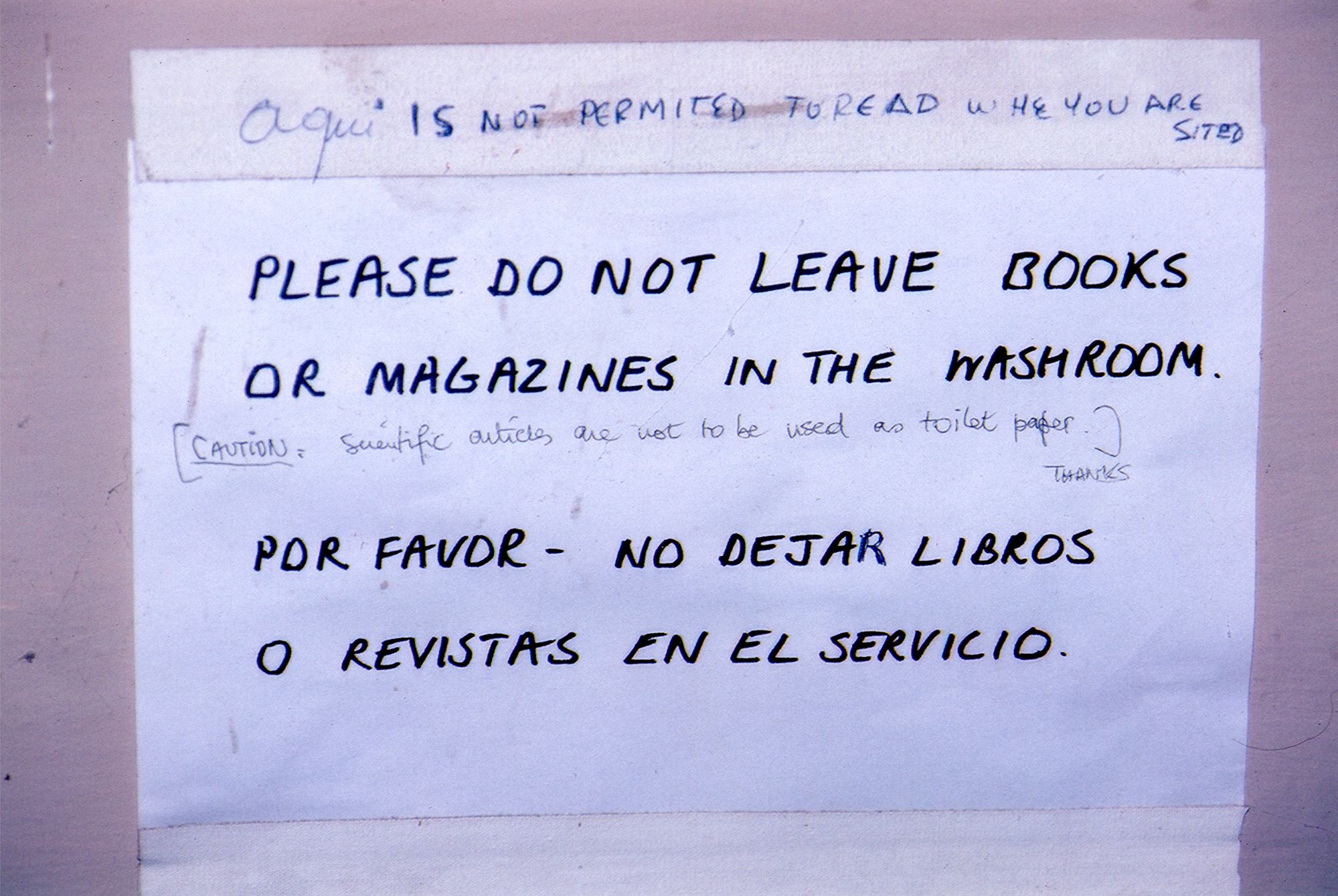Letters from the library
#02. In the bathroom
The history of bathroom reading is a history still to be written.
I speak of "history" because I assume that, from that glorious moment in the past when humans invented the toilet or some similar device in which to sit down, the need to read appeared. Simply to pass time. I would like to add that, long before that (or perhaps in parallel), reading materials used as an entertainment during that natural physiological process had a complementary use as personal hygiene elements. Or, at least, that's what oral tradition says.
We seem to have this habit of taking reading material to the bathroom. What's more: there are "bathroom libraries" (an actual trend on Pinterest). One which I have personally enjoyed scrolling through. There, I have found literary jewels such as Dante's Divine Comedy illustrated by Doré, or Ambrose Bierce's Devil's Dictionary, a satire frankly recommended both inside and outside the toilette.
The fact is that we librarians have a serious problem with these types of "libraries." To be honest, our level of hysteria rises to stratospheric levels when we have to deal with any environment, person, or object that may put at risk the immaculate whiteness of the pages we care for, or the binding of the books we catalog with such love. To tell the truth, we are a bunch of paranoids.
My predecessor at the Charles Darwin Foundation was no exception. Getting a book brought over from the mainland was painstakingly complicated ― just for it to be used by people who could not really appreciate the true art of reading. This led libraries to develop a strategy to deal with these issues.
I was able to find evidence of those strategies. Of course, I did that in our archive, which stores most of our memory: those small and great things that make us who we are today.
Reviewing an old box full of crumpled and half-torn papers, I found a letter from the 2000s from a former CDF collaborator, Phyllis Bentley, addressed to one of our former directors, Alan Tye. For those who were born in the age of emails and the Internet, I’ll quickly explain that a "letter" was an envelope (with sender and recipient, names, stamps...) within which several elements used to be included, especially messages. In this particular envelope, eaten away by time on this island and marked by the jaws of what I suppose would be several cellulose-hungry beetles, there was a handwritten note, with several attached photos. The note, addressed to Alan, read "Some more pictures for your amusement".
Among the included pictures, I found the one I'm sharing here: a bilingual poster placed in one of the Station's bathrooms (specifically, in the bathrooms of the "library, archive and museum", that has now been converted into a conference room) around 1982-3, asking for people to not cause nightmares to the librarian and be so kind as to not leave the reading material in the toilets.
[As expected, some anonymous contributors added a personal note to the poster.]
After laughing for a while, I separated the photo and put it in one of the boxes where I store materials that I consider valuable. I did this because of everything the picture represents. Not only the librarian's hysteria at its best, which is a good reason by itself. Also because of the excellent humor of the person who took a picture and sent it, as a funny memory of her life in Galapagos. I love the human touch to the poster as it represents one of those details that spices everyday life in any workspace. Something that, after all, is part of the history and the identity of the Charles Darwin Research Station.
Something, by the way, that speaks quite well of the inhabitants of the Station: readers so intense that they took their books even to the bathroom, and left that room so absorbed by what they had been reading...
...that they forgot the book next to the toilet.
[I need a linden tea now. The single idea of "book next to the toilet" has awaken my librarian's paranoia. Things of the trade.]
Keywords: History of CDF
Subject categories: Artifacts | Libraries | Memory | Objects
Time framework: 1980
Text & picture: Edgardo Civallero (edgardo.civallero@fcdarwin.org.ec)
Publication date: 1 February 2020
Last update: 1 November 2022
